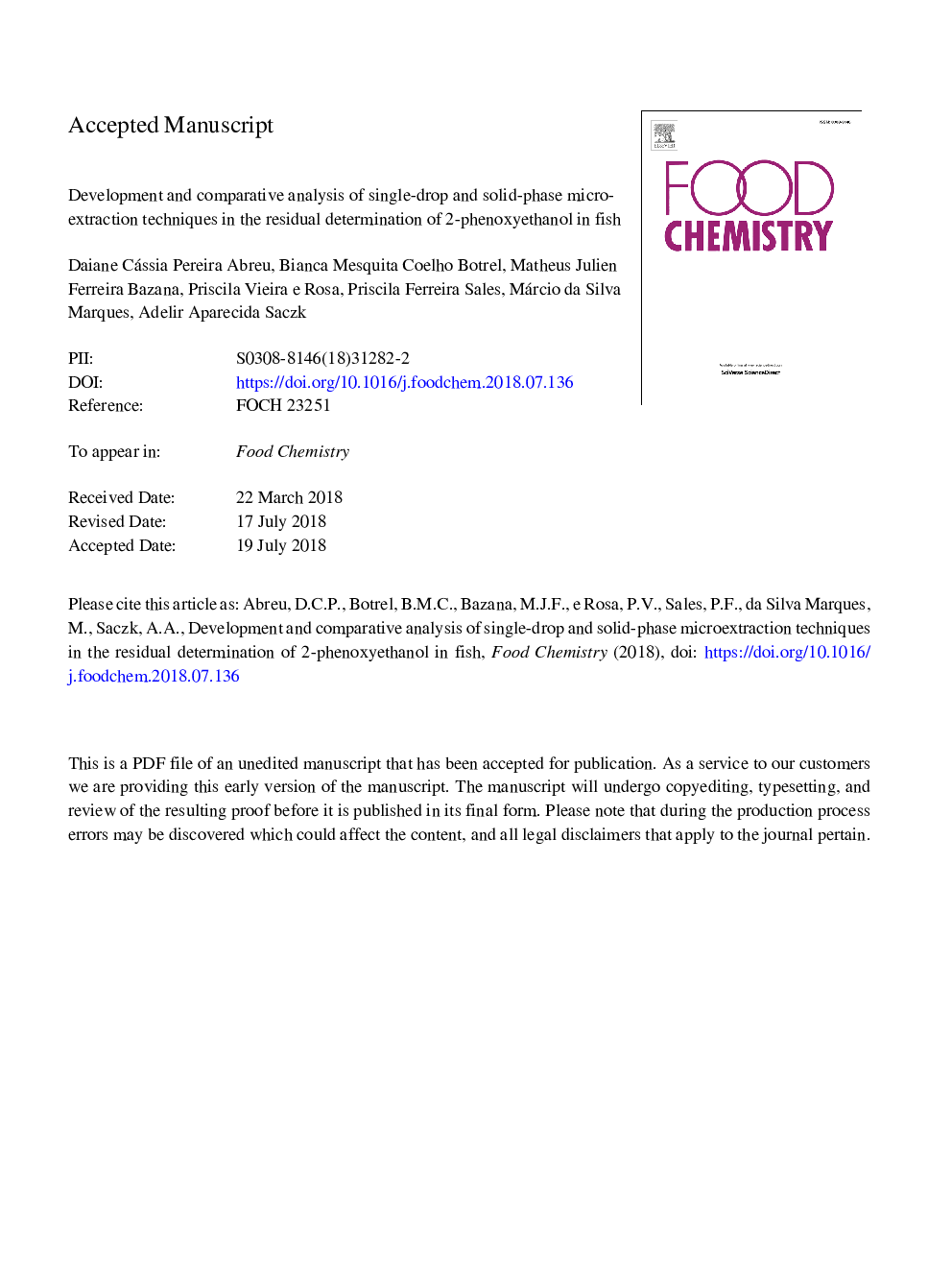| Article ID | Journal | Published Year | Pages | File Type |
|---|---|---|---|---|
| 7584014 | Food Chemistry | 2019 | 19 Pages |
Abstract
Solid-phase microextraction (SPME) and single-drop microextraction (SDME) in headspace mode, were used in the residual determination of the anesthetic 2-phenoxyethanol in fish fillets, to ensure food safety. For the optimization of the methodologies the experimental central composite design (CCD) was used, resulting in accurate evaluations with less amount of analysis. The developed methodologies presented good precision in the evaluated range, o limits of detection (LD) and quantification (LQ) for SDME were 0.2 and 0.62â¯Î¼gâ¯mLâ1 and for SPME were 0.18 and 0.56â¯Î¼gâ¯mLâ1, respectively. In the analyzed samples the determined elimination time of post-anesthesia 2-phenoxyethanol was 12â¯h for the SDME and 24â¯h for the SPME, at the anesthesia concentrations evaluated (450-1050â¯Î¼gâ¯mLâ1). The two techniques presented viability of application for the residual determination of 2-phenoxyethanol in fish, SPME being more sensitive and automated and SDME with lower operation cost.
Related Topics
Physical Sciences and Engineering
Chemistry
Analytical Chemistry
Authors
Daiane Cássia Pereira Abreu, Bianca Mesquita Coelho Botrel, Matheus Julien Ferreira Bazana, Priscila Vieira e Rosa, Priscila Ferreira Sales, Márcio da Silva Marques, Adelir Aparecida Saczk,
